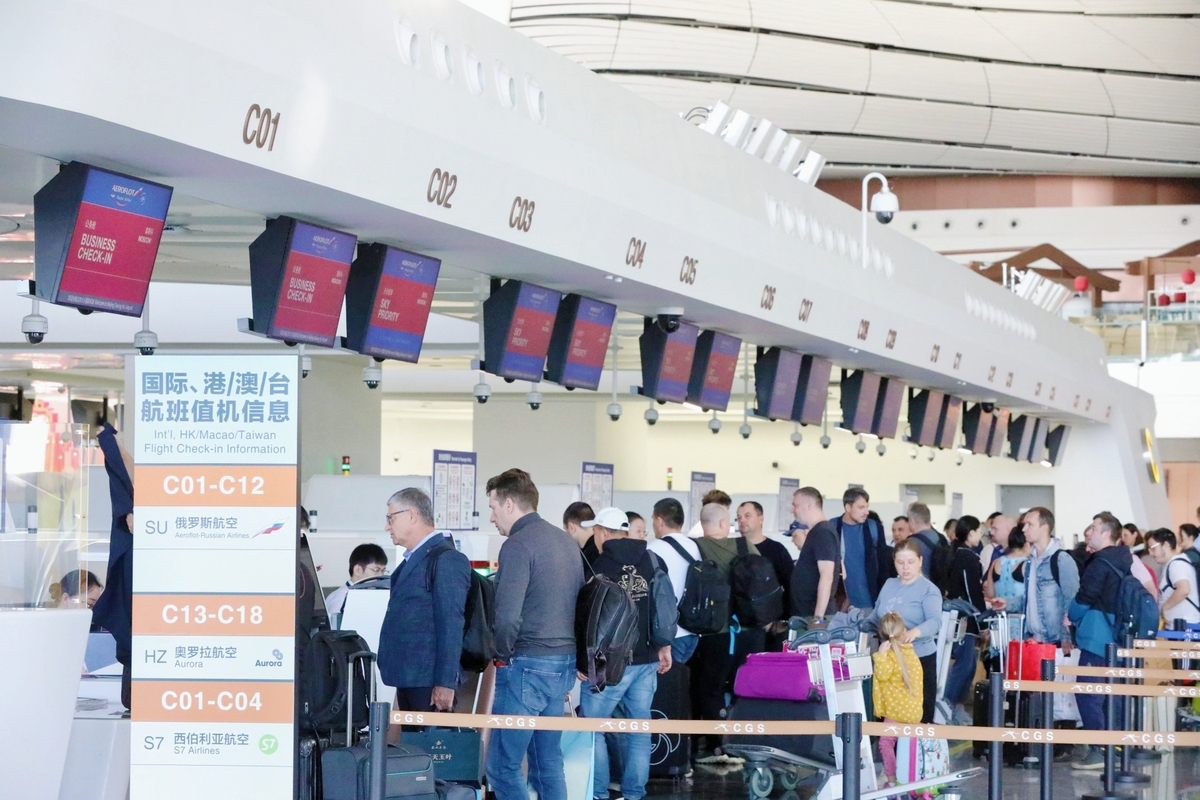BEIJING – Touching down at Beijing Capital International Airport, the energy of the city greets every visitor. China, famous for its rich history and rapid modern growth, remains high on many travel wish lists. In 2025, a more accessible visa-free policy will welcome millions from around the globe, making trips to China simpler than before.
With fewer barriers, exploring both ancient sites and bustling cities has never been easier. China’s open-door approach signals a genuine invitation to discover its many sides. Here’s a comprehensive look at how visa-free travel to China works in 2025, from who can visit to the top places to see and practical tips for travellers.

Who Qualifies for Visa-Free Entry to China?
China’s visa-free policy now covers 47 countries as of late 2024, fitting the country’s drive to increase tourism, business, and cultural visits. Citizens from these nations get up to 30 days visa-free for holidays, business trips, family visits, short exchanges or when passing through. The eligible countries are:
Asia: Brunei, Japan, Malaysia, South Korea, Qatar, Saudi Arabia, Oman, Kuwait, Bahrain
Europe: Albania, Andorra, Austria, Belgium, Bulgaria, Croatia, Cyprus, Czech Republic, Denmark, Estonia, Finland, France, Germany, Greece, Hungary, Iceland, Ireland, Italy, Latvia, Liechtenstein, Lithuania, Luxembourg, Malta, Monaco, Montenegro, Netherlands, North Macedonia, Norway, Poland, Portugal, Romania, Serbia, Slovakia, Slovenia, Spain, Switzerland
Oceania: Australia, New Zealand
Americas: Brazil, Argentina, Chile, Peru, Uruguay (from June 1, 2025)
Other regions: Bahamas, Barbados, Seychelles
China also honours mutual visa exemption agreements with 26 countries. Some visitors, such as those from Thailand and Georgia, can stay up to 90 days within 180 days. These countries include Armenia, Belarus, Bosnia and Herzegovina, Fiji, Kazakhstan, Maldives, Mauritius, Samoa, Singapore, Solomon Islands, Thailand, and several others.
Travellers from other countries can benefit from a 240-hour (10-day) visa-free transit policy. This applies to visitors from 55 countries, including the United States, Canada, and the United Kingdom, who are heading to a third country or region.
The impact of these changes is clear. In the third quarter of 2024, China welcomed over 8 million foreign visitors. Nearly 5 million of them arrived visa-free, marking a 78.6% increase from the previous year. This policy extension through December 2025 attracts both holidaymakers and business guests who value flexibility.

How Visa-Free Entry to China Works
China’s visa-free process is straightforward but comes with certain requirements. Visitors using the 30-day programme need an ordinary passport with at least six months’ validity from their planned date of departure. There’s no need for embassy paperwork beforehand. Arriving at the border, travellers show their passport and proof of their trip’s purpose, such as a hotel confirmation or a business invitation. The 30-day period begins the day after arrival.
The 240-hour transit policy is designed for those connecting to a third destination, such as Hong Kong, Macau, or another country. Travellers must present a passport, evidence of an onward flight within 10 days, and enter via one of 60 approved ports in 24 provinces, like Beijing, Shanghai, or Guangzhou. At the border, visitors receive a temporary entry permit, allowing travel within designated areas. Unlike older rules, this policy lets visitors move between provinces.
A key point: all foreign guests must register with local police within 24 hours of arrival. Hotels handle this automatically, but those staying in private homes or with friends have to register in person at a police station or online in some cities. Skipping this step could create travel headaches.
Passengers on cruise ships benefit from a 15-day visa-free policy if travelling in a group of two or more, covering China’s coastal provinces and Beijing. Hainan Island offers its own 30-day visa-free option for people from 59 countries, ideal for those after a beach escape.
Travelling Through China: More Movement, Fewer Limits
Once inside China, visa-free visitors can explore widely. Those using the 240-hour transit option can visit 24 provinces, from fast-paced Shanghai and Beijing to scenic areas like Guilin and Sichuan. China’s high-speed trains are a highlight, connecting cities efficiently and offering a glimpse into the country’s technology. These trains, sometimes reaching speeds of 350 km/h, often feature modern comforts like Wi-Fi.
The 30-day visa-free scheme lets travellers roam the entire mainland, with Tibet as the main exception due to its separate entry permit rules. This freedom means planning multi-city journeys is simple, with no need to worry about regional restrictions. China’s transport system, from bullet trains to budget-friendly domestic flights and extensive underground rail, makes getting around straightforward.

Top Places Attracting Visa-Free Guests
China’s variety attracts visitors of all tastes, and new visa-free rules open up classic and up-and-coming destinations. Here’s a look at the most popular spots in 2025:
Shanghai: A city of contrasts, with historical landmarks like the Bund set against the soaring towers of Pudong. Visitors often enjoy walks in Yu Garden, sample famous soup dumplings and make use of the 144-hour visa-free transit zone to explore the wider region.
Beijing: The heart of Chinese history and politics, Beijing offers must-sees like the Forbidden City, Tiananmen Square, and the Great Wall at Mutianyu. Exploring its maze of hutongs by bike provides a close-up view of city life.
Xi’an: Known worldwide for the Terracotta Army, Xi’an is a hotspot for history lovers. The lively Muslim Quarter brims with street food. The city’s 144-hour visa-free policy makes it a convenient stopover.
Chengdu: The place for panda fans, with its beloved research base. The city is also famous for spicy Sichuan dishes and ancient sites, including the Leshan Giant Buddha. Chengdu’s relaxed pace contrasts with China’s larger cities.
Hainan: Often called the ‘Hawaii of China,’ this island draws visitors seeking sun, sand, and surf. Sanya, its main resort town, is a favourite under the 30-day visa-free rule.
Guilin: Renowned for its dramatic rock formations and peaceful rivers, Guilin is a draw for nature seekers. Cruises along the Li River offer memorable views, and Guangxi province is covered by the 240-hour transit policy.
European travellers, especially from Germany and the UK, are increasingly visiting Shanghai and Beijing, while Sanya and Chengdu see a rise in popularity. According to Trip.com, bookings from Europe have jumped by over 600% since 2022, signalling a strong tourism rebound.
Recent Policy Updates and Traveller Advice
China’s expanding visa-free programmes have made 2025 a standout year for international travel. The 240-hour transit rule was recently added in Indonesia, bringing the number of eligible countries to 55.
From 9 June 2025, citizens of Bahrain, Kuwait, Saudi Arabia, and Oman can enjoy 30-day visa-free visits. The cruise policy, introduced in May 2024, has made coastal sightseeing easier for groups.
Travellers are encouraged to always carry their passports and a printed copy of their travel plans. Immigration officials may ask for proof of accommodation or onward travel, especially for those on the transit policy.
It’s wise to double-check which ports allow visa-free entry, as not all airports and train stations qualify. Those making multiple entries can do so without restriction for most nationalities, with the option to exit to Hong Kong or Macau and return for another stay.
Walking through Shanghai’s vibrant streets or tasting local dishes in Chengdu, visitors quickly sense the unique mix of old and new that defines China. The updated visa-free policies in 2025 reduce paperwork and open opportunities for travellers worldwide.
Whether climbing the Great Wall, drifting down the Li River, or sharing tea in Hangzhou, guests can now experience China with fewer barriers. With a valid passport and a little planning, this ancient and modern country is now within reach for millions of curious travellers.















